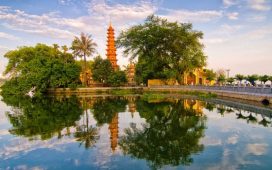Small bandits have strung a chain across the track, bringing our Land Cruiser to a halt. They wait to one side, three wild-haired and pint-sized girls. They are Wayúu, indigenous to the northern reaches of Colombia and Venezuela, and brave.
I’m a tourist, but this track to Punta Gallinas, the northern tip of South America, is used by bigger, scarier bandits. Alta Guajira is a smuggler’s desert of snaking paths and ancient laws.
José Gerardo González, my Wayúu guide, doesn’t like these barriers. He feels that children — and sometimes their parents — begging beside the road in this way demeans his people. The highway girls laugh, telling him he can always choose to go another way.
I look past them, beyond their family ranchería, at the treacherous landscape — soft sand, red rock and vine-clad cacti. José pays up, a bocadillo (a sweet guava and sugarcane jelly wrapped in banana leaves), receiving grins in reply.
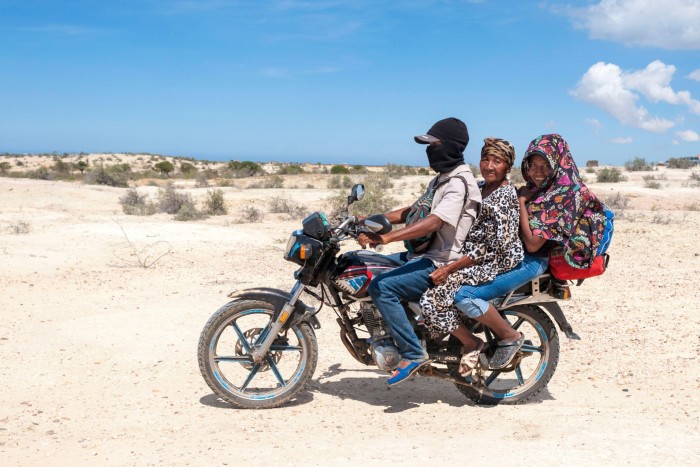

My trip from the village of Dibulla to the northernmost point of the continent is a mere 200 miles as the crow flies but it sears itself into my mind. A swirling mix of history, beauty, danger, people and peoples will make it among the most extraordinary journeys I’ve ever taken.
The Caribbean coast heads north-east from Cartagena until it hits the Sierra Nevada de Santa Marta, one of the world’s highest coastal ranges, topping out at 5,775m. Then it continues into the mountain’s rain shadow, into a desert promontory that is the home of the Arawak-speaking Wayúu.
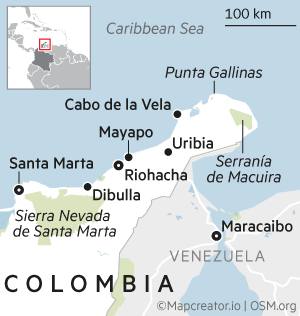
They have their own laws, rituals and myths, which has seen them clash with the conquistadors and then the Colombian government. “In Bogotá, they think they have science while we have myth,” says Professor Weildler Guerra Curvelo, perhaps the Wayúu’s foremost intellectual. “They have religion while we have witchcraft, they have importers while we have smugglers. Colombia has not understood us.”
As a result the Wayúu have been victims: of the state, the Catholic Church, and of the drug cartels that have controlled much of remote Colombia. But they have also fought back, and formed their own smuggling gangs. The professor served as governor of Colombia’s La Guajira department in 2017, after his predecessor was sentenced to 55 years in jail.
Lately, though, life has been stabilising and tourists have been creeping north in search of astonishing beauty and strangeness, kept safe by adventurous tour operators using brilliant local guides. Some come to surf, others to sandboard down 60m-high dunes, some just to swing in hammocks in remote villages that offer Arizona landscapes set beside the Caribbean Sea.
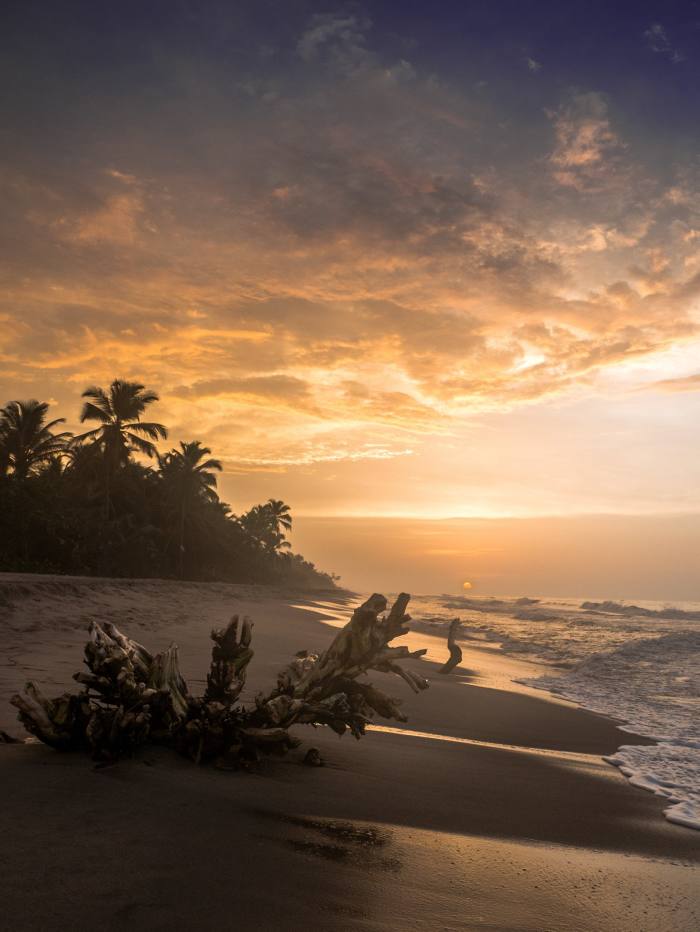
My own journey into the desert begins in a swamp, in Dibulla, a village known for its vallenatos, or country music. Alfredo Navas, a botanist, is showing me guamacho, a sort of primordial cactus that wants to be a tree. We’re knee-deep in water when he pauses. “One of my guys came through here with a donkey,” he says. “It stepped on a crocodile.”
Navas is at the head of a syndicate that has bought 1,000 hectares of ranch land next to a six-mile beach to regenerate the dry tropical forest and build a tourism business.
“At first the locals thought we were smugglers,” he says (there is a hidden runway nearby the cartels once used). But that changed when he started bringing in tourists, asking the villagers to show visitors their foods, dance and music.
We reach the Tapias river and an inflatable canoe. A caiman is spooked as we paddle downstream, causing a fuss when it gets entangled in tree roots. Cocinero birds (greater ani) argue in the trees. At last, we emerge into salt air, on a long beach populated only by the children of itinerant fishers netting crabs.
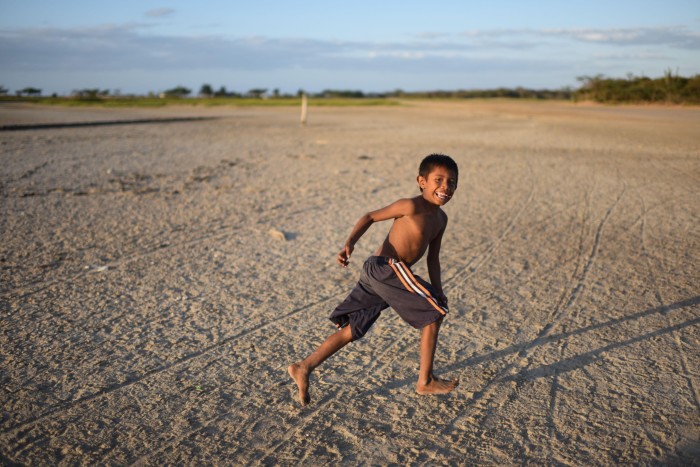
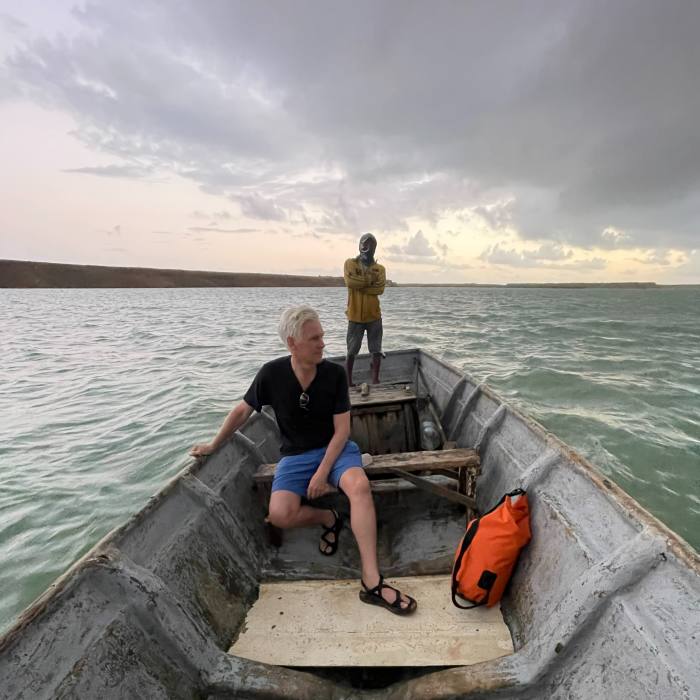

Navas wants to build super-chic cabanas, but it remains a dream. Instead, we eat prawns outside his beach shack, brought to us by the crab catchers’ parents.
These fishermen later take me in their boat along the coast and drop me in front of Territorio Magico, one of the last boutique hotels on the way north. I’m staying because the tour operator, Black Tomato, wants me to have a little luxury before I really get going, which I mull over as I pick river ticks off my legs in the last of the sun.
The following morning, José picks me up in a 1998 Land Cruiser that is driven by Arturo Jayariyu, another Wayúu. This is, they say, the only combination that will get us through the roads ahead. Alongside me in the back is Fernando Rivera, an immaculately turned out guide from Cartagena.
We pass through La Guajira’s sun-scoured capital of Riohacha — founded nearly 500 years ago when the Spanish found pearls in the bay — and then leave the main highway to Venezuela, turning north into Wayúu indigenous territory.
I’ve arrived at the end of a two-month downpour, a once-per-decade event that has turned the roads to quagmire and the desert lime green. We stop in Mayapo, a drying wind carrying sand across the unruly sea, for a lunch of crested snapper that lies on the plate as bright as a nugget of gold.
Ipuana Virgin Beach, where we have lunch, is an odd place; an empty beach and a handful of shack-like rooms containing luxurious beds, hammocks, swings and baths. It has a fintech backpacker vibe, but the neighbouring hotel, Bethel, is stranger still. It has a DJ and driftwood rooms on stilts looking out to sea like angry crabs.
At the Wayúu capital of Uribia we join a road that runs beside a straight-to-the-horizon railway. A huge yellow engine comes the other way hauling a line of armoured boxes. “Explosives,” says José, headed for Glencore’s vast Cerrejón coal mines, 70 miles south.
As the sun begins to set, we turn towards it, then follow a dirt track beside the sea north to the village of Cabo de la Vela. The Rancheria de Utta, our bed for the night, is set beside the sea and José smiles as we step down. “This is a true Wayúu hostel,” he says, offering a glass of wine and showing me around.
In buildings like stables, students from Bogotá swing in chinchorros, the famous Wayúu double hammocks, legs, arms and laughter emerging from wildly coloured fabrics. Lobster is served by the edge of the bay, under a sky where Mars and Jupiter glow. Finally, I settle into a plain room that comes with surprisingly luxurious sheets, towels and soaps.
Cabo de la Vela is a Xanadu for backpacking kitesurfers. The village is our last stop before the bid for the top of South America, and Arturo pulls over for gas at a shop piled with jerry cans.
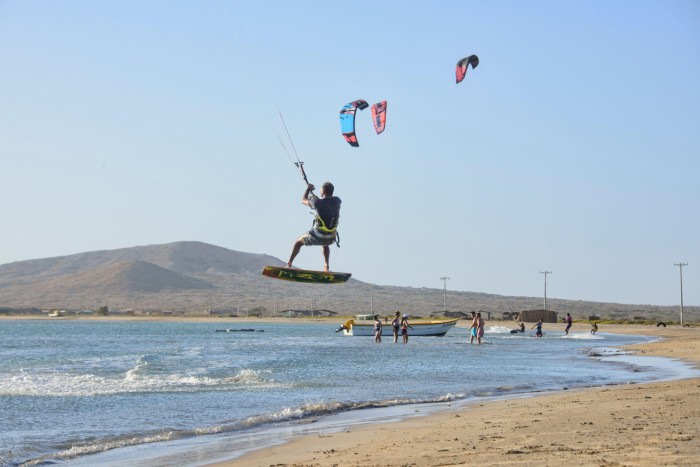
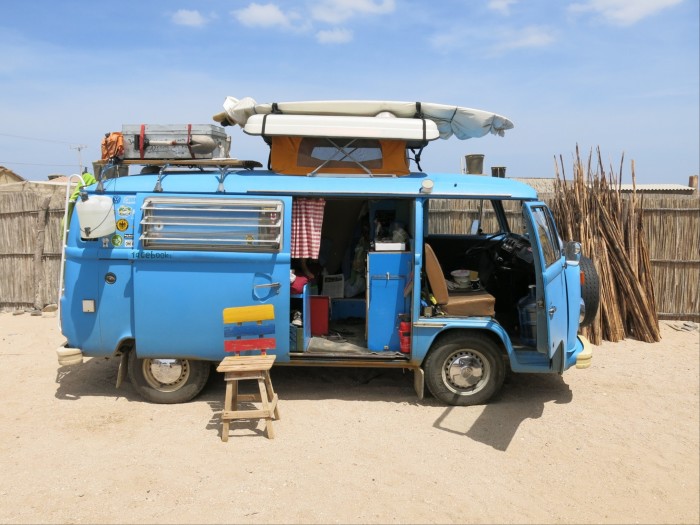
Fernando and I wander off and find a man, incomprehensibly in full balaclava, serving juice from behind a table of fruit. Fernando chooses borojó and níspero because I have never seen them before, and I taste their astringent flavours from a swing that lifts me over gently lapping waves.
The calm ends there. Soon we are deep in the desert, tracks going off in different directions. The Wayúu live spread out, their rancherías passed down matrilineally.
We hit the first of their barricades. “The tolls started 20 years ago, when local families began to fix the trails, then it spread,” Professor Guerra Curvelo had told me, when Fernando organised a meeting over drinks at his home in Riohacha. Like José and Arturo, he hates it. “We are a dignified people, too tall to be begging on the road.”
The trail rises. To the east is the Serranía de Macuira, a fantastical mountain oasis we’re unable to reach because the roads are too bad. To the west is a wide and deep bay. We stop by a group of rock globes to watch squalls pass across the vast landscape as caracara falcons circle.
Professor Guerra Curvelo explained that “the Wayúu have a notion of a trans-historical time when the entire universe was human. The sun and wind were human, plants and animals were human. Then comes the transformative time, and some of the humans begin to grow leaves and roots, others fangs and claws.”

Looking towards the bay, José dips into this world by telling me of Wolunka, whose vagina had teeth. Two naughty twins saw her bathing and shot the teeth away with their arrows, allowing her to give birth to the Wayúu nation, but the violence stained the rocks red with her blood, the flamingos pink and the cardinals that like to perch atop Alta Guajira’s cacti scarlet.
A redness creeps into the sky as the sun begins to set, and we are still far from our destination, Ranchería Luzmila, another Wayúu hostel. Just then the Land Cruiser’s wheels sink to the axles into a river bed. Arturo and José start to dig. A cloud of locusts passes. Looking for rocks to steady the tyres, I discover a Wayúu melon patch.
Arturo manages to get us out and on to higher ground, just as darkness falls.
The following morning I am woken by goats scratching at the door. The walls of my room are bare, and I look out at the dusty floor from my crisp linen sheets. It finally dawns on me that Fernando and José are luxing up these plain rooms each night before I reach them.
I emerge to early fingers of light reaching across the red landscape. A blind cat is facing off against a goat on top of a table in the ranchería, watched by parrots.
I walk on towards the brightening sky and stand on top of a cliff. A yacht sits at anchor in a wide bay. It rides high, although the sails have shredded and the paint on the hull is peeling. Fernando appears at my shoulder to tell me it was found drifting beyond the northernmost point, with no one on board.
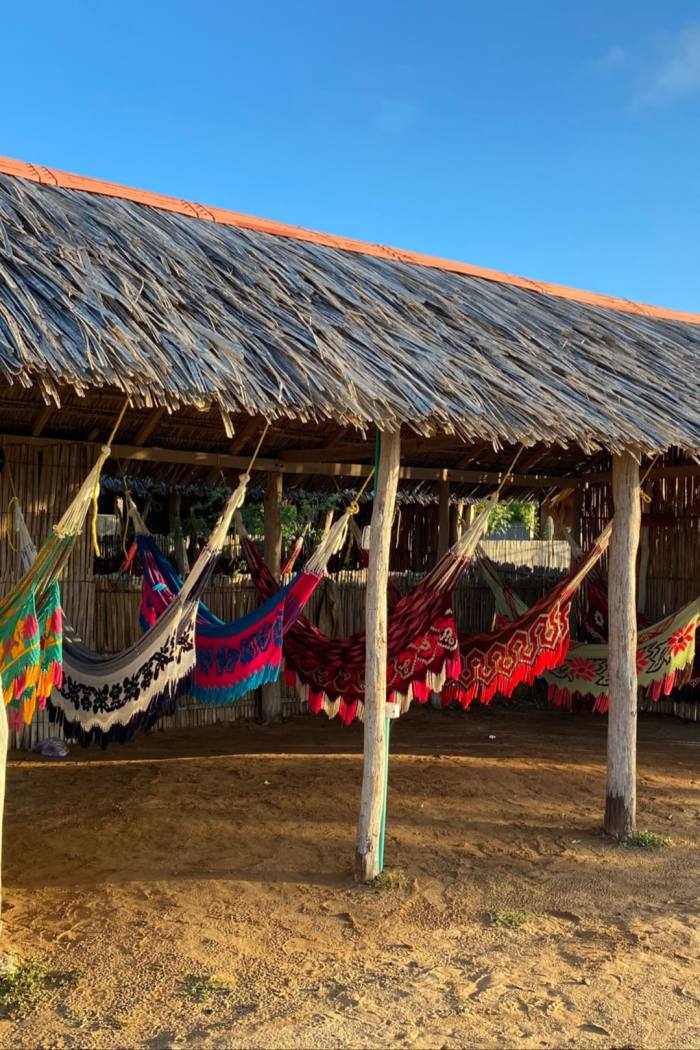

This is clearly a bay where once pirates slept, and probably still do. José will later point in the direction of an isolated harbour, saying it is used by smugglers. It’s a sign of my serenity in his care that I ask if we can visit (his blank gaze carries an eloquent reply).
After a simple breakfast of eggs, we drive to Rancheria Punta Gallina. It is the northernmost farm on the continent and is owned by Rosa Arends Robles, a young mother of two. She explains her rituals and laws and then, calling on relatives, shows us Wayúu dances. They mimic the creatures of the desert: the quail, the caracara, the rattlesnake.
Rosa tells me she is the kindergarten teacher, with very little assistance from the state. “We might be at the top of South America but we’re the bottom of anyone’s concern,” she says.
She cuts a heroic figure and it freezes my heart when, asked how she feels to be Wayúu, she says, “I no longer feel ashamed,” as if she ever should have. To the north, sand dunes climb up into the blue sky and, overwhelmed by the experience, I scramble up until at last the Caribbean Sea roars in below. Then I run down towards it.
Details
Ruaridh Nicoll was a guest of Black Tomato (blacktomato.com), which can arrange bespoke trips to Colombia, including time in La Guajira region, from £5,250 per person for 10 days including accommodation, internal flights, private transfers and a curated selection of experiences. For more on visiting the country, see colombia.travel/en.
Find out about our latest stories first — follow @ftweekend on Twitter



